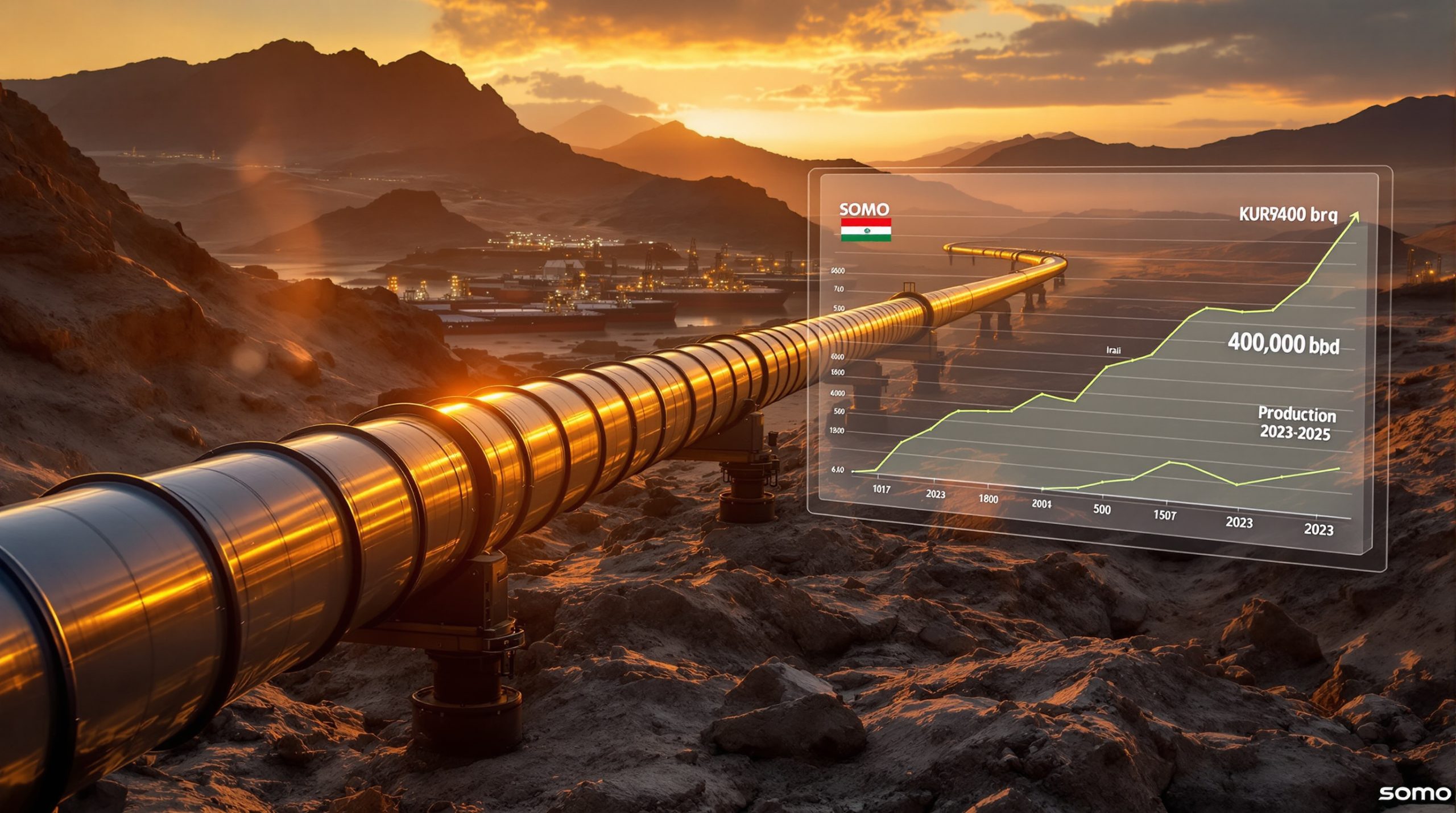How Is AI Transforming Copper Demand?
The rapid expansion of artificial intelligence infrastructure is creating unprecedented demands on copper resources globally. As AI computing power requirements surge, the metallurgical foundations supporting this digital revolution face mounting pressure.
The Data Center Revolution
Traditional enterprise data centers have historically operated with power densities ranging from 1 to 10 kilowatts per server rack. However, AI-optimized data centers are fundamentally different beasts, requiring between 30 to 80 kilowatts per rack to handle intensive computational workloads.
This dramatic increase in power density necessitates substantial infrastructure changes. AI facilities require thicker copper wiring throughout their electrical systems, more robust copper bus bars for power distribution, and significantly enhanced cooling systems to manage the thermal output from densely packed computing resources.
The physical footprint of AI data centers may not appear dramatically different from their traditional counterparts, but their internal copper intensity tells a different story. Every square meter in an AI-optimized facility contains 2-3 times more copper than conventional data centers due to these enhanced power and cooling requirements.
Quantifying AI's Copper Appetite
The collective impact of global AI infrastructure development is projected to create additional copper demand for AI and clean energy of approximately 400,000 tons annually from data centers alone. This represents roughly 1.5% of current global copper production—a significant new demand source emerging rapidly.
High-performance computing facilities designed specifically for AI workloads require specialized copper components that go beyond basic wiring. These include:
- Enhanced thermal management systems with copper heat sinks
- High-capacity power delivery systems with larger copper bus bars
- More robust uninterruptible power supplies with copper windings
- Specialized cooling infrastructure with copper-intensive heat exchangers
Industry analysts note that while individual AI data centers may not appear substantial in isolation, their collective global growth represents a structural shift in copper demand patterns that commodities markets are still adjusting to understand.
What's Driving Copper Price Projections?
Market Fundamentals Through 2028
Current copper prices hover between $8,500-9,000 per ton, but market analysis suggests a trajectory toward $13,500 per ton by 2028. This represents a compound annual growth rate of approximately 8-9%, significantly outpacing historical price growth patterns.
This price acceleration stems from a fundamental imbalance in market dynamics. By 2028, global copper demand is projected to reach approximately 35 million tons annually, driven by multiple sectors simultaneously increasing their consumption.
Meanwhile, supply growth faces persistent constraints. Global copper supply forecast is anticipated to grow much more slowly, reaching only about 29 million tons by 2028, creating a substantial supply-demand gap of around 6 million tons.
This projected deficit represents more than 17% of anticipated demand—a severe imbalance that would typically trigger significant price responses in commodity markets.
Supply Constraints Analysis
The limitations on copper supply growth stem from multiple structural factors rather than temporary disruptions. Current production capacity stands at approximately 27.5 million tons as of 2025, but expansion faces significant hurdles:
- New mining projects typically require 10-15 years from initial exploration to first production
- Declining ore grades at existing mines necessitate processing more material for the same copper output
- Environmental permitting processes have become increasingly rigorous and time-consuming
- Capital investment requirements have escalated alongside these challenges
These factors create a situation where even though mining companies recognize the market opportunity, their ability to respond with new supply remains constrained by these fundamental realities.
Price Volatility Factors
Beyond the basic supply-demand imbalance, several additional factors contribute to potential copper price volatility:
- Regulatory hurdles in major producing regions like Chile and Peru continue to evolve
- ESG compliance requirements have intensified, adding complexity to project development
- Geopolitical tensions affecting major mining regions create additional uncertainty
- US tariff impact on copper are reshaping global trade flows and regional price differentials
Water access remains another critical constraint, as copper processing requires substantial water resources in regions often facing scarcity challenges. This environmental limitation further restricts the ability to rapidly expand production capacity in many copper-rich regions.
Can Global Production Meet Growing Demand?
Mining Industry Response
Major copper producers have demonstrated awareness of the looming supply gap, with some showing production increases in recent quarters. Chilean operations have shown signs of recovery, with improved outputs and earnings reported by major mining companies.
However, these incremental improvements fall far short of addressing the projected 6-million-ton annual deficit anticipated by 2028. While numerous projects have been announced, the industry faces a significant gap between project announcements and actual production timelines.
Several factors contribute to this disconnect:
- Feasibility studies frequently reveal greater complexity than initially anticipated
- Environmental impact assessments often require multiple revisions
- Community engagement processes can introduce unexpected delays
- Financing large-scale projects has become more challenging as interest rates have risen
These realities create a situation where announced projects frequently experience delays or scope reductions before reaching production.
Geographic Supply Concentration
Global copper production remains highly concentrated, creating additional supply resilience challenges. Chile and Peru together account for approximately 40% of global copper production, making supply vulnerable to regional disruptions.
Other significant production regions include:
- Democratic Republic of Congo, with rapidly growing production but political stability concerns
- Indonesia, where regulatory changes have impacted mining operations in recent years
- Australia and Canada, both expanding copper mining but from smaller base production levels
This geographic concentration magnifies the impact of regional events—whether political, environmental, or regulatory—on global copper availability.
Extraction and Processing Bottlenecks
Beyond the challenges of developing new mines, existing operations face growing constraints:
- Declining ore grades in established mining regions require processing more rock for the same copper output
- Water scarcity affects processing capabilities in key regions like Chile's Atacama Desert
- Energy costs for extraction and refining have increased substantially
- Skilled labor shortages in mining regions create operational challenges
These factors combine to limit the industry's ability to rapidly expand production, even with strong price signals and clear demand growth.
How Does Energy Transition Amplify Copper Demand?
Power Grid Transformation
The global push toward decarbonization requires a fundamental transformation of power transmission infrastructure, projected to double by 2035. This expansion isn't merely about scaling existing systems—it involves creating more complex grid architectures.
Modern power grids require extensive copper for several reasons:
- Expanded transmission networks to connect renewable generation in remote locations
- Enhanced distribution systems to handle bidirectional power flows
- Interconnections between previously isolated grid segments
- Upgraded substations with modern transformer technology
Both centralized and decentralized energy systems require extensive copper interconnections. Even distributed energy systems need substantial copper cabling to create the mesh networks that ensure reliability and resilience.
Renewable Energy Infrastructure
Different clean energy technologies vary significantly in their copper requirements:
- Wind farms require approximately 2.5-3 tons of copper per megawatt of capacity
- Solar installations need 4-5 tons of copper per megawatt of capacity
- Energy storage systems contain high copper content in battery connections and thermal management
- Electric vehicle charging networks demand extensive copper for power delivery
The copper intensity of renewable energy significantly exceeds that of traditional power generation. A natural gas power plant might require 1-1.5 tons of copper per megawatt, while solar installations need 3-4 times that amount.
Comparative Demand Analysis
The shifting landscape of copper demand reveals dramatic changes across sectors:
| Sector | Current Annual Demand | 2028 Projected Demand | Growth Rate |
|---|---|---|---|
| Traditional Manufacturing | 12M tons | 14M tons | 16.7% |
| Energy Transition | 5M tons | 11M tons | 120% |
| Data Centers/AI | 1M tons | 4M tons | 300% |
| Other Uses | 9.5M tons | 6M tons | -36.8% |
This table illustrates how traditional manufacturing continues to grow moderately, while energy transition and data center applications are experiencing explosive demand growth. The contraction in "Other Uses" reflects efficiency improvements and material substitution in less critical applications.
What Are The Supply Chain Implications?
Critical Infrastructure Impacts
The projected copper supply constraints could create cascading effects across multiple industries:
- Renewable energy deployment targets may face delays as material constraints slow installation rates
- AI infrastructure buildout could experience bottlenecks, potentially limiting computational capacity growth
- Manufacturing bottlenecks for electronic components might emerge as producers compete for limited copper supplies
- Construction industry may face material shortages affecting everything from commercial buildings to residential wiring
These potential constraints introduce uncertainty into planning across multiple sectors, potentially slowing the pace of both digital transformation and energy transition initiatives.
Strategic Sourcing Strategies
Forward-thinking organizations are implementing various approaches to mitigate these risks:
- Vertical integration between technology and mining companies through strategic investments
- Long-term supply agreements to secure material flow despite market volatility
- Investment in recycling and circular economy initiatives to reduce dependence on virgin materials
- Exploration of alternative materials for specific applications where substitution is technically feasible
Major technology companies increasingly recognize that securing their copper supply chain is becoming as strategically important as semiconductor access has been in recent years.
Innovation Opportunities
The projected supply constraints also create incentives for innovation:
- Copper-saving technologies and designs that maintain performance with reduced material usage
- Enhanced recycling methodologies to recover more copper from existing products and waste streams
- Material substitution research for applications where alternatives might be viable
- Miniaturization approaches to reduce overall material requirements while maintaining functionality
These innovations may help reduce the severity of the projected supply gap, though they are unlikely to entirely eliminate it given the scale of the challenge.
How Should Stakeholders Prepare For Copper Constraints?
For Technology Companies
Organizations building data centers and AI infrastructure should consider several strategic approaches:
- Forward purchasing strategies to secure supply, potentially including long-term contracts
- Collaboration with mining and refining operations through strategic partnerships or investments
- Design modifications to optimize copper usage without compromising performance
- Investment in recycling infrastructure to recover materials from decommissioned equipment
Companies that secure their copper supply chains early may gain competitive advantages as constraints intensify. This applies particularly to hyperscale cloud providers whose growth depends on continuous data center expansion.
For Governments and Policymakers
Public sector responses could include:
- Streamlining permitting processes for new mines while maintaining environmental safeguards
- Creating incentives for increased production and recycling through targeted policy interventions
- Developing strategic reserves of critical minerals including copper
- Fostering international cooperation on critical minerals supply chains
Government policy can significantly influence both the supply and demand sides of the equation, potentially moderating market imbalances through thoughtful intervention.
For Investors
The changing copper landscape creates both risks and opportunities:
- Understanding the copper intensity of different technologies helps identify exposure risks
- Evaluating mining companies based on their project pipelines and development timelines
- Assessing technological innovations in material efficiency that could impact demand projections
- Monitoring regulatory developments affecting supply in key producing regions
Investors who understand these dynamics may identify opportunities in copper investment strategies with strong development pipelines, recycling technology innovators, and suppliers of copper-efficient alternative technologies.
What Solutions Could Address The Copper Gap?
Accelerating Mining Development
Reducing the timeline from exploration to production represents perhaps the most direct approach to addressing supply constraints:
- Streamlining permitting processes while maintaining environmental protections
- Developing public-private partnerships to expedite project development
- Adopting advanced technologies for more efficient exploration and extraction
- Finding balanced approaches that respect environmental concerns while recognizing resource needs
Industry analysts suggest that reducing average development timelines from the current 10-15 years to 7-10 years could significantly alleviate projected supply constraints.
Enhancing Recycling and Circular Economy
Copper's recyclability offers significant opportunities:
- Current recycling rates average approximately 30% of copper globally
- Improved infrastructure and incentives could potentially increase this to 50-60%
- Urban mining from electronic waste represents a particularly rich opportunity
- Designing products for eventual disassembly and material recovery
Recycling cannot completely solve the supply gap due to copper's long service life in many applications (20-50 years in buildings and infrastructure), but it can meaningfully reduce pressure on virgin material supplies.
Material Science Innovations
Research into material alternatives continues on several fronts:
- Developing copper alloys with enhanced conductivity for reduced material requirements
- Creating composite materials with reduced copper content but similar performance characteristics
- Exploring nanotechnology applications for efficiency improvements
- Researching alternative conductive materials for specific applications
While pure copper remains unmatched for many applications, targeted substitution in less critical uses could help redirect supplies to applications where alternatives aren't viable.
FAQ: Copper's Role in the Technology and Energy Transition
How much copper is used in a typical AI data center compared to traditional facilities?
AI data centers require approximately 3-8 times more copper per square meter than traditional data centers. This increased intensity stems from higher power densities (30-80 kW per rack versus 1-10 kW in traditional facilities), which necessitate more robust electrical infrastructure, thicker cabling, and enhanced cooling systems.
Why can't copper mines simply increase production quickly?
Developing new copper mines typically takes 10-15 years from exploration to production due to multiple factors:
- Extensive geological exploration and resource validation requirements
- Complex permitting processes including environmental impact assessments
- Significant infrastructure development needs including power, water, and transportation
- Capital investment requirements often exceeding billions of dollars per major project
These timeframes create a structural lag between market signals and supply responses.
What percentage of copper demand comes from renewable energy?
Currently, renewable energy accounts for approximately 15% of global copper demand. This is projected to increase to 25-30% by 2030 as solar, wind, and energy storage deployments accelerate worldwide. The copper intensity of renewable generation significantly exceeds that of fossil fuel alternatives, creating a multiplier effect as energy systems transition.
How does copper recycling factor into the supply equation?
Recycled copper currently provides about 30% of global copper supply. While recycling rates can be increased through improved collection and processing infrastructure, the long service life of copper in many applications (20-50 years in buildings and power infrastructure) limits the immediate impact of recycling on supply shortages.
Copper recycling requires approximately 85% less energy than primary production, creating both economic and environmental incentives for increased recovery rates.
What alternatives exist for copper in electrical applications?
Aluminum can substitute for copper in some electrical applications, but it requires approximately 1.5 times the cross-sectional area to achieve the same conductivity and has different mechanical properties that make it unsuitable for some uses.
Other alternatives being researched include:
- Silver (higher conductivity but much more expensive and supply-constrained)
- Graphene and carbon nanotube composites (promising but not yet commercially viable at scale)
- Conductive polymers (suitable for some specialized applications but not general substitutes)
Each alternative has limitations in cost, availability, or performance that prevent wholesale substitution for copper.
Navigating the Copper-Intensive Future
The convergence of AI computing and clean energy transitions is creating unprecedented copper demand for AI and clean energy, with projected shortfalls that could impact global technology and energy ambitions. The 6-million-ton gap anticipated by 2028 represents a significant challenge requiring coordinated action across industries and governments.
Addressing this challenge will require a multi-faceted approach: accelerating responsible mining development, enhancing recycling infrastructure, investing in material science innovations, and fostering collaboration between technology companies and resource providers. Strategic planning and investment today will determine whether copper constraints become a bottleneck or an opportunity for innovation in the coming decade.
For businesses dependent on copper-intensive technologies, developing resilient supply chains and exploring efficiency improvements will be crucial to navigating the projected market tightness. Meanwhile, investors and policymakers must recognize copper's strategic importance to both digital transformation and decarbonization goals.
The copper conundrum ultimately represents a test of our ability to manage critical resource transitions in an era of accelerating technological change. By understanding these dynamics and taking proactive steps, stakeholders across the technology and energy sectors can better position themselves for success in a copper-constrained future. Additionally, understanding US copper project insights will be crucial for evaluating future supply capabilities and investment opportunities.
Ready to Capitalise on the Next Major Copper Discovery?
Stay ahead of the market with real-time alerts on significant ASX mineral discoveries through Discovery Alert's proprietary Discovery IQ model, transforming complex mineral data into actionable insights for investors focused on copper and other resources. Visit our discoveries page to understand why historic mineral discoveries can generate substantial returns and begin your 30-day free trial today.




